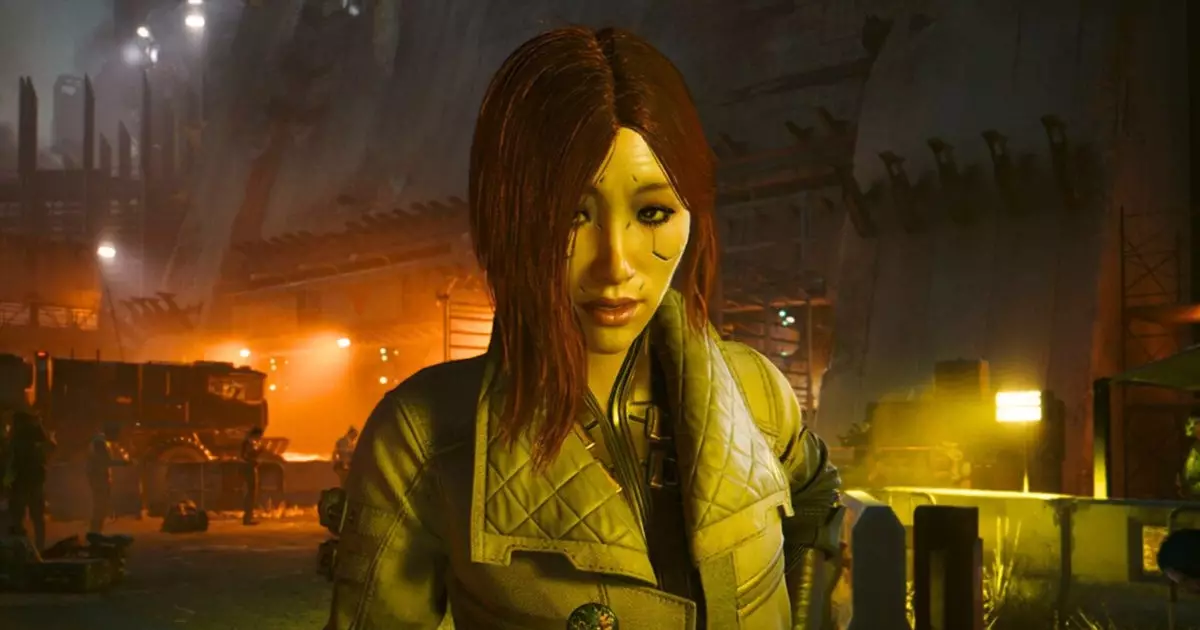As the gaming community eagerly awaits the follow-up to Cyberpunk 2077, one can’t help but feel a sense of intrigue mixed with uncertainty. CD Projekt Red has captivated gamers with its sprawling open-world aesthetic, but details about the sequel remain scarce. Currently, the studio devotes its focus to The Witcher 4, placing the Cyberpunk sequel in the shadows. With the enchanting prospect of a new narrative emerges through whispers from influential creators in the realm, particularly Anna Megill and Mike Pondsmith—two creative forces that could shape the essence of this ever-evolving universe.
Megill’s involvement as lead writer instills hope that the sequel will embrace significant themes, given her experience on Control and the upcoming Fable. However, the absence of concrete plot details raises questions. Is the anticipation building merely on foundation less than robust? Gaming sequels often find themselves constrained by the expectations set forth by their predecessors, yet this is where opportunity for innovation lies. If CD Projekt Red is attentive to the lessons learned from Cyberpunk 2077, they might just craft a narrative that does justice to the franchise’s potential.
Navigating the Narrative Landscape
Mike Pondsmith, the mastermind behind the Cyberpunk universe, offers scant insight into the game’s unfolding narrative. He mentions in passing that he is less directly involved this time but does interact regularly with the development team. His observations provide tantalizing hints of a broader world beyond Night City. The mention of another city to explore resonates with gamers who crave diversity in environments; it hints at expanded horizons and new challenges to face within the game.
Interestingly, Pondsmith likened the new setting to a “Chicago gone wrong,” contrasting sharply with comparisons to Blade Runner. This shift in thematic landscape elevates expectations. Chicago’s gritty and urban experience could enrich storytelling elements that are sometimes overshadowed by sheer graphical fidelity. The juxtaposition of familiar locales with ambitious new environments lays the groundwork for a grander exploration of the Cyberpunk ethos.
Redefining Game Mechanics
Moreover, the traversal experience within these locales cannot be overlooked. Managing player agency in an evolving world might involve revisiting Night City while enhancing it with novel mechanics and interactions derived from the new environment. Critics of Cyberpunk 2077 often cite gameplay inconsistencies and bugs, so introducing well-executed enhancements could tether the gaming experience to something genuinely transformative. Recall how The Legend of Zelda: Tears of the Kingdom ambitiously expanded established territories, successfully immersing players in nostalgic yet fresh experiences.
The Yakuza series has also thrived on revisiting and recontextualizing settings, proving that familiar environments can evoke nostalgia while feeling entirely new. If CD Projekt Red applies a similar philosophy, the findings from the past games could blossom into a richer, multifaceted experience that resonates with players.
Holding on to Hope
Although many gamers, including myself, felt let down by the initial release of Cyberpunk 2077, there remains an undeniable intrigue about how the sequel will address previous shortcomings. Could it be that the developers learned from past missteps, or will they buckle under the weight of their own ambitions once again? As we gather fragments of insight from industry stalwarts, it’s sensible to approach anticipation with cautiously high hopes. The span of several years ahead appears daunting, but perhaps this extended timeline will yield a refined product, crafted not only in response to consumer feedback but propelled by innovation.
Engaging with the lore of Cyberpunk, understanding the cultural backdrop, and translating that into a meticulous gaming dialogue will be vital for the franchise’s resurgence. As we await further details, the elements emerging from pondsmith’s perspective seem promising. Regardless of personal bias towards the original game, the unfolding potential of this sequel renews interest and manifests the hope that CD Projekt Red can reclaim the spotlight within the gaming industry. After all, within the ruins of ambition lies the heart of creativity, and that just might lead us to a gaming experience unlike any we’ve seen before.

